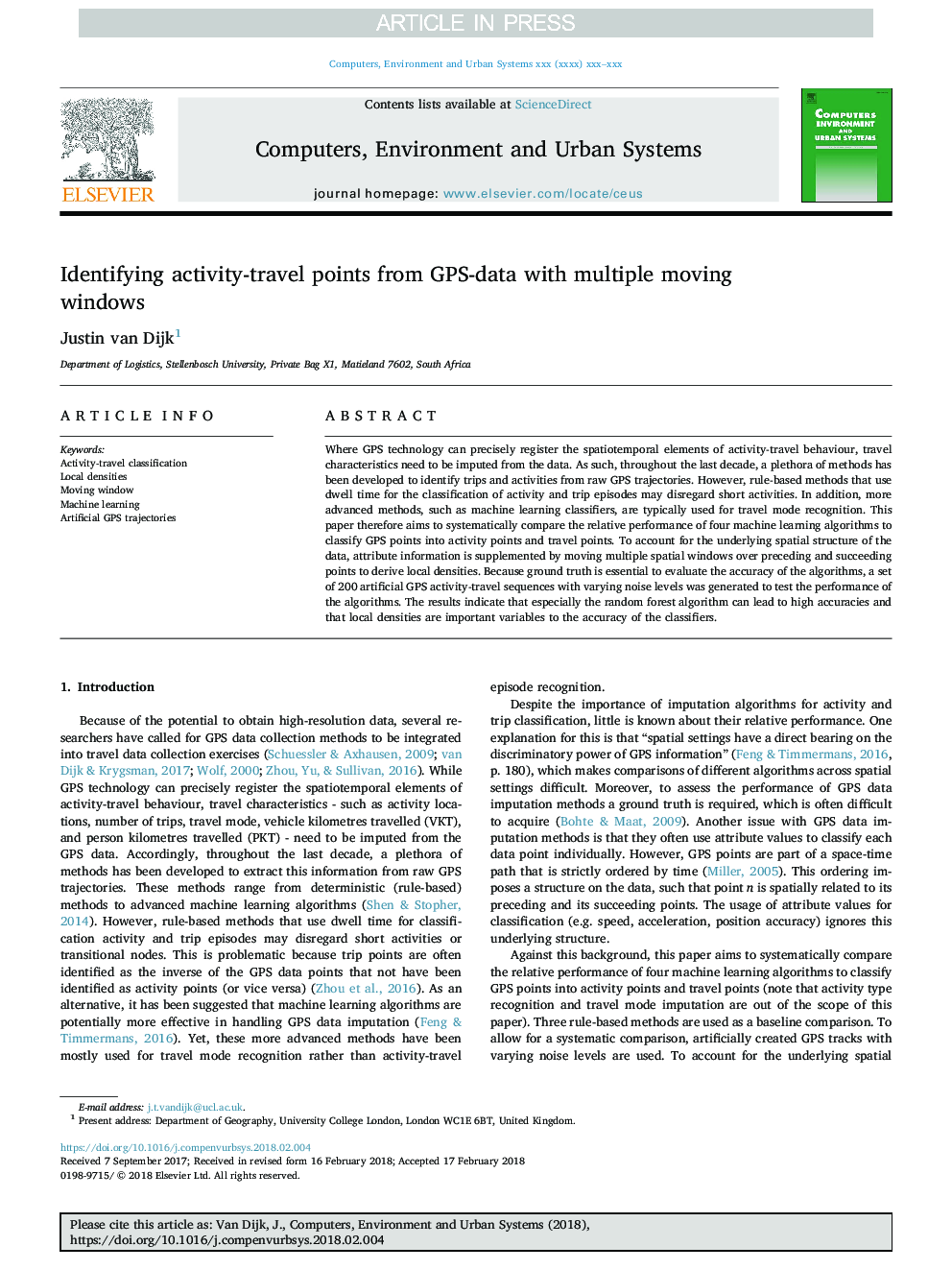| Article ID | Journal | Published Year | Pages | File Type |
|---|---|---|---|---|
| 6921840 | Computers, Environment and Urban Systems | 2018 | 18 Pages |
Abstract
Where GPS technology can precisely register the spatiotemporal elements of activity-travel behaviour, travel characteristics need to be imputed from the data. As such, throughout the last decade, a plethora of methods has been developed to identify trips and activities from raw GPS trajectories. However, rule-based methods that use dwell time for the classification of activity and trip episodes may disregard short activities. In addition, more advanced methods, such as machine learning classifiers, are typically used for travel mode recognition. This paper therefore aims to systematically compare the relative performance of four machine learning algorithms to classify GPS points into activity points and travel points. To account for the underlying spatial structure of the data, attribute information is supplemented by moving multiple spatial windows over preceding and succeeding points to derive local densities. Because ground truth is essential to evaluate the accuracy of the algorithms, a set of 200 artificial GPS activity-travel sequences with varying noise levels was generated to test the performance of the algorithms. The results indicate that especially the random forest algorithm can lead to high accuracies and that local densities are important variables to the accuracy of the classifiers.
Keywords
Related Topics
Physical Sciences and Engineering
Computer Science
Computer Science Applications
Authors
Justin van Dijk,
